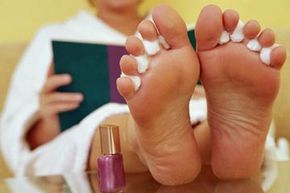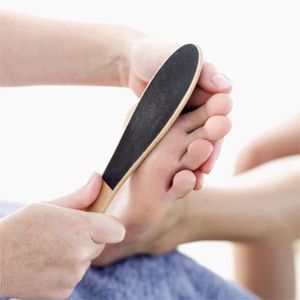Maybe you enjoy having a pedicure every few weeks and consider it necessary for the good health of your feet. Or maybe you've never had one before and are a little nervous at the idea of letting someone get that close to your feet. Either way, you may have some questions about how the whole process works.
There are multiple reasons to indulge yourself in a pedicure -- for beauty, for healthy feet, for relaxation, for pampering. Since our feet carry us everywhere, it's especially important to care for them. Regular pedicures are great for the removal of dead skin and calluses. They also help prevent nail diseases and disorders like ingrown toenails and onychorrhexis (longitudinal ridging of the nail). In addition, reflexology, a specific type of foot massage that an increasing number of salons are offering, can be used as a form of pain management.
Advertisement
There are many different kinds of pedicures you can give yourself or request at your local salon. The standard pedicure begins with warm footbath followed by the removal of dead skin from the feet. Cuticles, softened from the bath, are then pushed back from the toenail, usually with a Q-tip or orangewood stick. The toenails are then trimmed and moisturizing lotion is massaged into the feet. Finally, the toenail polish is applied.
Slightly more involved is the paraffin pedicure, which includes everything in the standard pedicure, plus a paraffin wax dip where warm wax is massaged into your toes, feet and lower legs to hydrate your skin. Paraffin wax is oil-based and known for its pain-alleviating properties. The French pedicure is an add-on to the standard pedicure where white polish is applied to the ends of the toenails while the rest of the nail is painted with a sheer polish. Gel pedicures are when a coat of clear or colored gel is applied to your toenails to extend the life of your pedicure and prevent the polish from chipping.
But what's the deal with some of those new salon pedicure techniques of letting little fish nibble at your feet? And what about those of us that have ticklish feet? Are pedicures for us, too? Read on to find out.
Advertisement

